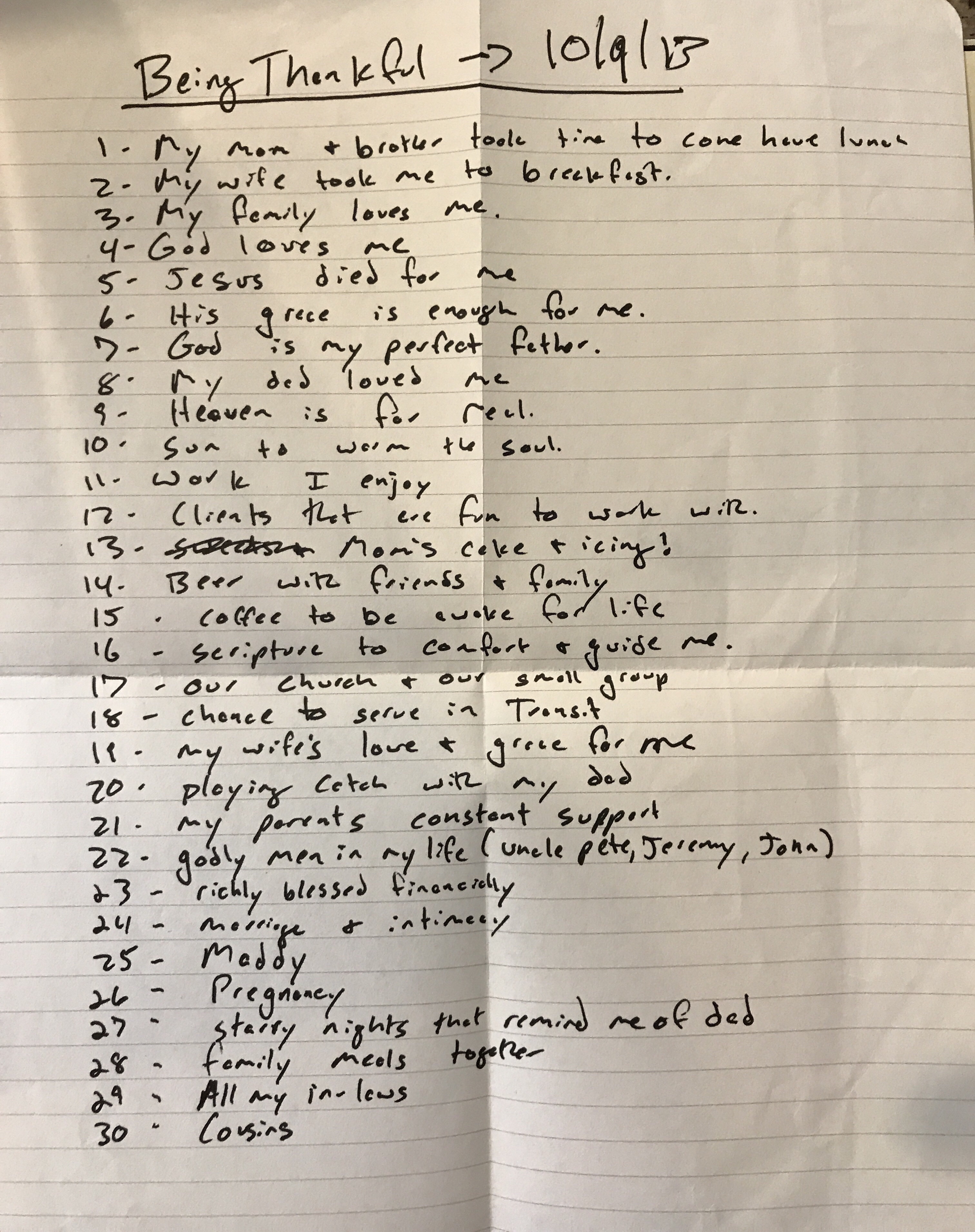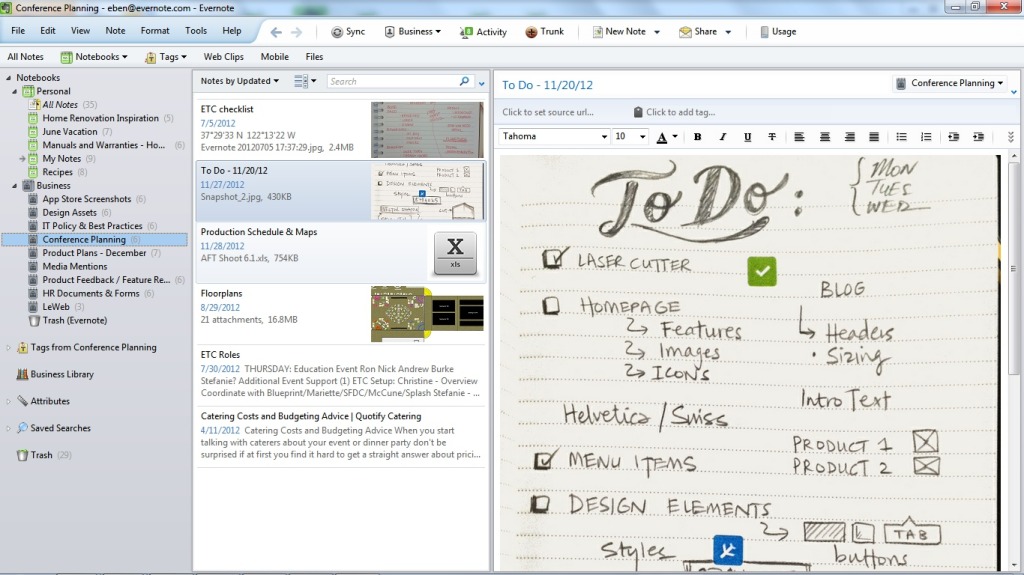
Thanksgiving 2017
For the first time in my life, this Thanksgiving was spent in the house I grew up in with out either of my parents. My dad passed away 5 years ago and my mom has been in the hospital since the beginning of November.
I believe Thanksgiving is a choice that we make in spite of our present circumstances. Choosing thanks leads our heart and mind towards gratitude and away from the pull of darkness especially in the midst of tragedy. This lesson became concrete in my life a few years ago. It was my second birthday since my dad’s passing and the darkness had a grasp over my soul. If you’ve lost a loved one than you know this darkness. It’s a cloud of grief, memory, and sadness that envelopes you. My mentor, John, for several years has taught on the importance of being thankful. One practice is making a list of specific things you are thankful for in life. So, that October 9th, in my car and tired of that darkness, I decided to make my list (see picture from my journal) of thanks.

Losing my dad has been one the toughest experiences in my life, but there has been much good as well. Practicing gratitude, whether through a list or morning ritual, allows us to gain perspective and break away from the hold that emotions have over the truth. So many times, I allow how I feel in the moment to rule over what I know to be true. While death is hard, I found that in giving thanks there are so many good things in my life. For me, it was the debit of losing my dad but the credits of a closer family, incredible wife, my daughter waiting to be born, etc.
It’s almost impossible that when you make and read your list of thanks to feel your heart and mind being lead to the light. That’s gratitude.
Being thankful is a spark of fire in the darkness that bleeds out the night.
No matter your present circumstances, I hope you choose thankfulness. It will take disciple and fortitude, but in that choice you make – you will find freedom in gratitude and escape from the darkness.



